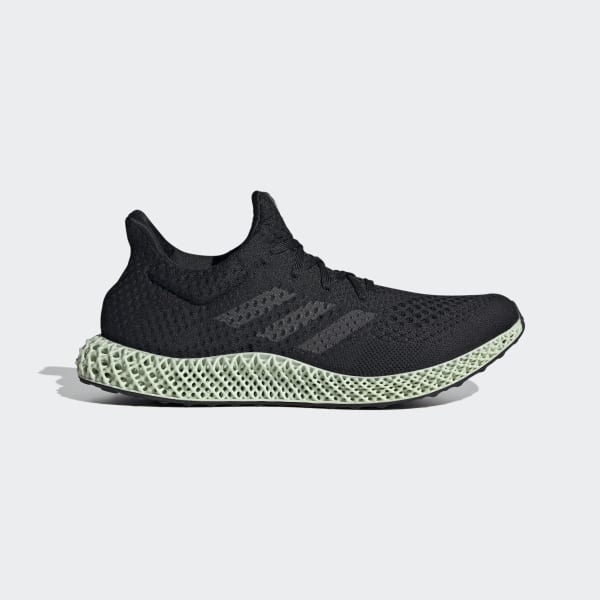Introduction
The digital age is blurring the boundaries between the internet and reality, and 3D technologies are already being used on a large scale in industries such as architecture and healthcare, resulting in disruptive innovations. Although attempts to integrate technology into the clothing industry have only been underway for about ten years, they are already developing at an alarming rate (CB Insights, 2021). I have been studying digital fabrication as my minor, in which I get in touch with 3D technologies such as Rhino modelling, laser cutting, 3D printing, and CNC cutting. With repeated experimentation, I have come to appreciate the convenience of these techniques, not only in terms of their efficiency but also in terms of their high level of precision. By discussing the use and impact of 3D technology in the entire fashion industry chain, including design, production, and distribution, this new topic can be better understood by consumers.
How is 3D technique used in fashion industries?
In 2020, COVID-19 has swept the world, hitting the traditional fashion industry, and taking a heavy toll on the retail sector, coupled with the fact that people have had to isolate themselves from the outside world. From designers to retailers who are unable to work properly, more and more brands are deciding to try new directions in light of the current difficulties (Yother, n.d.). In a sense, this special situation has contributed to the development of fashion into the digital dimension. But what are the 3D technologies? And how are they used in the fashion industry?
3D modelling
Whether being a fashion lover or not, everyone has their judgment of its existence: aesthetics, comfort, identity value, style, etc., but this is all based on garments that have a physical presence. With 3D modelling technology, it is already possible to meet the design, display, and selling process in a digital way.
Designers can design and adjust all aspects of the garment based on the virtual display of styles and sizes, as well as the fabric’s structure, softness, drape, movement, and other three-dimensional effects of 3D modelling software (Yother, n.d.).

Online shopping has also led to the increased use of virtual try-on tools. Amazon, Asos, and Facebook launched a function that combines 3D with AI and other technologies to provide consumers with a more tailored selection of sizes, fit, and other services (CB Insights, 2021).

3D printing
Well-known designers have been integrating 3D printing with clothing to create futuristic high-fashion garments, while many brands are experimenting with this 3D automation technology for mass production (Gregurić, 2019).

The use of 3D-printed in fashion first came to the forefront in 2013. Michael Schmidt and Francis Bitonti created the world’s first fully articulated 3D-printed gown for burlesque dancer Dita Von Teese. This was the first time that a fashion piece conceived and designed by designers through the 3D printing process could move like a textile (Howarth, 2013).


In addition to haute couture, 3D printed fashion can also be seen in everyday life. Adidas released the world’s first mass-produced 3D printed sneaker Futurecraft 4D in 2017, which has a 3D printed insole (Sculpteo, 2021). People can now customize the colour and pattern of their shoes via the Adidas website, and 3D printing technology can be better applied to small-scale production as well as the manufacture of limited-edition sneakers and can even customise the soles to suit the consumer’s weight and walking style.


The World’s First Digital-Only Fashion House: The Fabricant
The Fabricant was founded by Kerry Murphy as ‘the world’s first digital fashion house’. It is trying to show people through digital fashion that clothes do not necessarily exist in physical form, he offers the possibility for people to change into fashionable clothes with the click of a mouse.
In 2019, The Fabricant auctioned off a digital fashion piece, “Iridescence”, for $9,500 at the Ethereal Summit in New York. It is a demonstration of the great value of digital fashion that can be embraced and traded (Islam, 2019). In the same year, the brand presented its first digital fashion show on YouTube in the form of a short film. Unlike traditional fashion shows, all the garments did not exist in real life and were made up of data, which gives the viewer a 360-degree view of the main forms of digital fashion. Kerry Murphy said that in digital fashion, people are not passive consumers but creative agents who can craft their expressions and virtual identities through digital clothing (Xu, 2021).


The Affection of Digital Fashion
The use of 3D technology is a revolutionary change from traditional retail. The only thing digital fashion consumes is technology and data, and the 3D process helps save both time and money. Since everything is generated on the computer, the need for sample making is unnecessary. Optitex, a fashion design software company, estimates that the fashion industry spends between $600 and $800 million a year on sampling (Li, 2020). It also requires no shipping and less retail stock.

As well as contributing to the sustainability of the fashion industry, digital fashion is also a new field of freedom, fantasy, and self-expression. 3D digitally composed fashion with no boundaries, 3D body size scanning can help to enable digital customisation services, providing consumers with the designs they want and offering the opportunity to personalise designs especially for those not in the fashion industry (Li, 2020).

Vision of the Future
The trend toward the digitalisation of clothing is inevitable. Technologies offer solutions that will help us to increase efficiency and promote sustainability, as well as push the industry forward. And who will the fashion shoppers of the future be? According to Michaela Larosse, around 3.5 billion people worldwide are digital fashion customers, accounting for more than 55% of total buying power. Digital fashion customers typically belong to Generation Z and Jubilee consumers who have grown up in the digital age (Xu, 2021). They lived in a blurred boundary between the real and the virtual. They need to express themselves not only with real clothes, dressing themselves on digital platforms is the real deal.
Through my research, I have gained a comprehensive understanding of how 3D technology is revolutionising the way consumers shop and dress. Now I have approached the background of the industry and highlighted business, I am attracted and curious about the uncertainty and endless possibilities of the future. But at the same time, I realised that my topic was too broad and I needed to look for more specific groups of people that digital fashion can affect and how it can help them to wear or buy clothes in more detail.
Conclusion
In all, digital fashion is a huge, untapped creative field where it is possible to do things that were previously impossible with physical clothing. Perhaps in the next 10 years or even 5 years, I believe that digital fashion and fascinating 3D technology will be able to explore infinite possibilities and become mainstream and that digital will be one of the ways we live. In that diverse world, digital fashion can also be cleverly integrated with the physical and they will provide people a more holistic experience.
References
Yother, C. (n.d.). Virtual Fashion Design | A New Aspect To Sustainable Fashion. Retrieved from https://luxiders.com/virtual-fashion-design/
CB Insights. (2021, May 11). The Future Of Fashion: From Design To Merchandising, How Tech Is Reshaping The Industry. Retrieved from https://www.cbinsights.com/research/fashion-tech-future-trends/
Gregurić, L. (2019, July 31). 3D Printed Fashion: The State of the Art. Retrieved from https://all3dp.com/2/3d-printed-fashion-the-state-of-the-art-in-2019/
Howarth, D. (2013, 7 March). 3D-printed dress for Dita Von Teese by Michael Schmidt and Francis Bitonti. Retrieved from https://www.dezeen.com/2013/03/07/3d-printed-dress-dita-von-teese-michael-schmidt-francis-bitonti/
Sculpteo. (2021). 3D printed clothes in 2021: What are the best projects? Retrieved from https://www.sculpteo.com/en/3d-learning-hub/applications-of-3d-printing/3d-printed-clothes/
Li, L. (2020). Foreseeing the future | How will surreal 3D technology transform the fashion industry? Retrieved from https://mp.weixin.qq.com/s/qyJcr-7zU_AEXyyRQ2VJqA
Islam, B. R. (2019, May 14). World’s First Digital Only Blockchain Clothing Sells For $9,500. Retrieved from https://www.forbes.com/sites/brookerobertsislam/2019/05/14/worlds-first-digital-only-blockchain-clothing-sells-for-9500/?sh=59d78300179c
Xu, X. M. (2021). Kerry Murphy: The future of fashion. Retrieved from https://mp.weixin.qq.com/s/AhN5ZC9lduedSh-rZ4VPrQ?v_p=89&WBAPIAnalysisOriUICodes=10000010_10000327_10000003_10000002&launchid=10000365–x&wm=3333_2001&aid=01A0LgYqp16c1eqoRr6k4vCEv-bLrZZ6d4njzVUxgiEHHC_mU.&from=10B5393010
Cai, J. (2020). TechStyles Column: Interview with Founder Kerry Murphy of the world’s first digital-only fashion house, The Fabricant. Retrieved from https://www.esquiresg.com/techstyles-column-interview-with-founder-kerry-murphy-of-the-worlds-first-digital-only-fashion-house-the-fabricant/
Lier, C. (2019). 3D technology: A New Dimension for Fashion. Retrieved from https://medium.com/swlh/3d-technology-a-new-dimension-for-fashion-6d5407ed880d